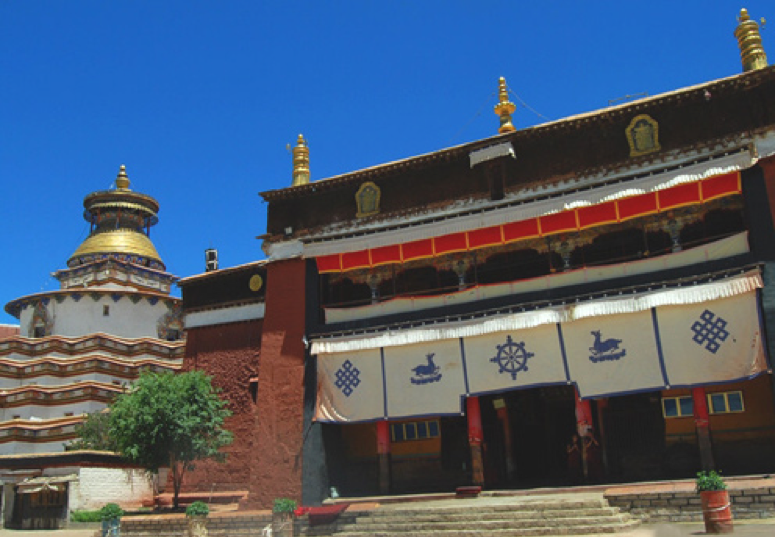Chinese name: 十万佛塔& 白居寺
English Name: Pelkor Chode Monastery or Palcho Monastery
Tibetan Name: རྒྱང་རྩེ་དཔལ་སྐོར་ཆོས་སྡེ།།
Location: At the northeast of Gyantse County, 100 km east of Shigatse,
Opening time: 09:00-19:00
Gyangtse is very famous for its giant architectural stupa in Tibet, called Kumbum and Pelkor Chode monastery next to it. Both the stupa and monastery are located on the far north side of the town. Where the Kumbum literally means “hundred thousand images of Buddha”, and that is the only Nepalese-styled stupa in the whole of Tibet standing at 34m high.
However, while waking via the white layers until the sixth floor was trimmed with decorative stripes. The mural paintings and wall paintings are the wonders of the stupa that mostly date back to its original time, there are around 108 cells all around the stupa and every cell has different paintings and statues inside. While waking in the clockwise ascent up to the top from where you will have a beautiful view of the old part of the town in the shadow of the fort.

Three main features: Kumbum Stupa, Main temple, Murals
1. Kumbum Stupa is the most symbolic architecture in the monastery, which attracts tourists and artists with its sculptures. It is 42.4 meters high and it is composed of nine layers of nearly 77 temple halls with enshrining more than 100,000 Buddha statues in halls, niches, and murals, hence the nickname “Ten Thousand Stupa”.

Gyantse Kumbum stupa and the monastery campus
2. The main temple of the monastery is called Tsulaklakang, it has an Assembly Hall and is well-preserved. The structure has three floors and has well-preserved murals and images of the fifteenth century.
You can see colorful silk Thankas of Arhats hanging around the pillared hall, and yak butter lanterns illuminate the rear part of the temple, at the entrance to the main Assembly hall, there is a protector shrine called Gonkhang.
3. Murals: Pelkor Chode Monastery is also noted for its distinctive sculptures and murals. Murals on themes of “Esoteric and Exoteric Buddhism”, and the story of the Buddha are found in profusion in the monastery. The murals have left a deep influence on Tibetan painting art.

Saga Dawa Festival is the most important festival here. On that day, many Lamas and pilgrims will come to Pelkor Chode Monastery for praying. 500 lamas perform chanting in the monastery and thousands of pilgrims attend the ceremony. If you want more information, you can contact us at [email protected].
